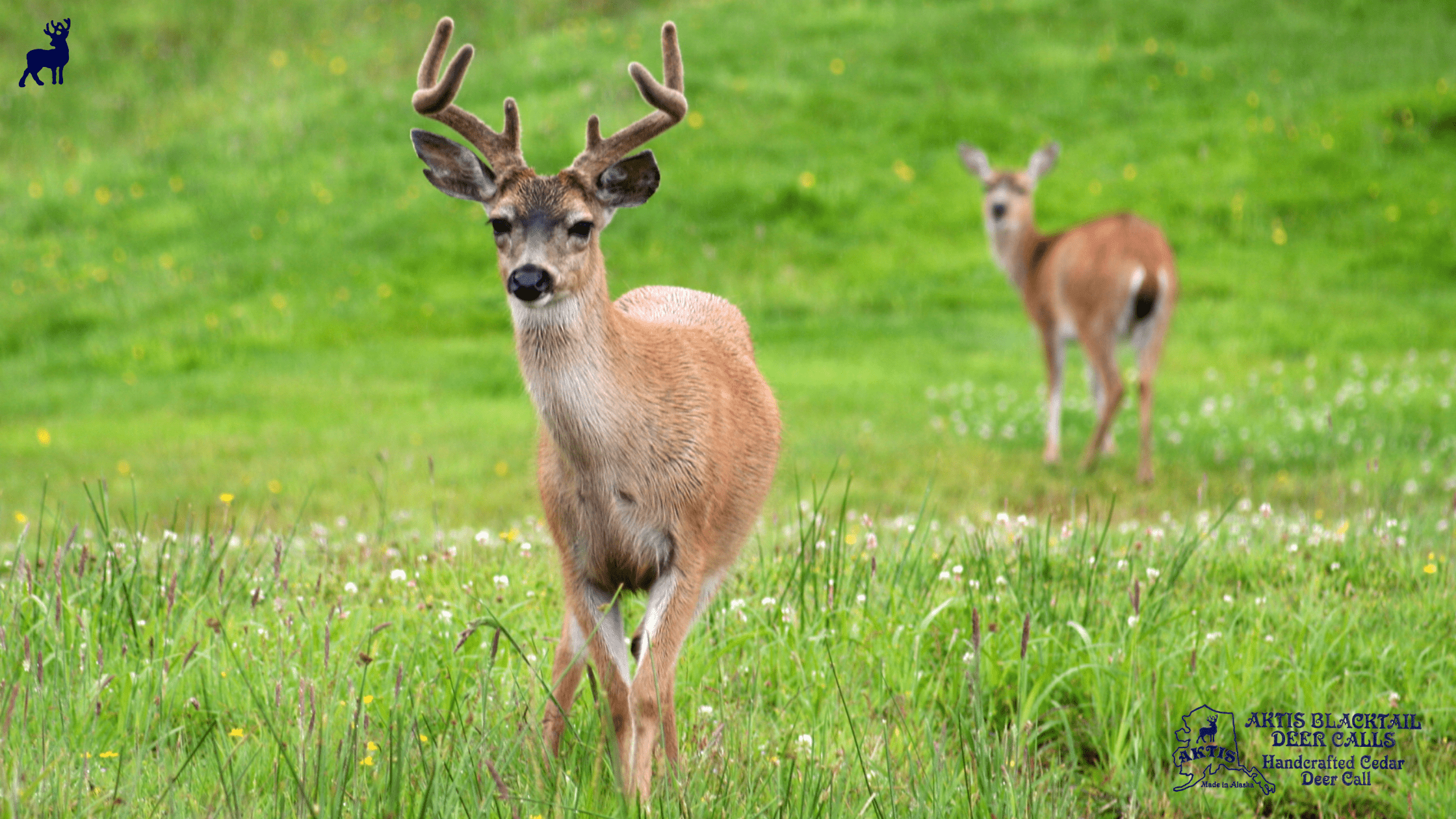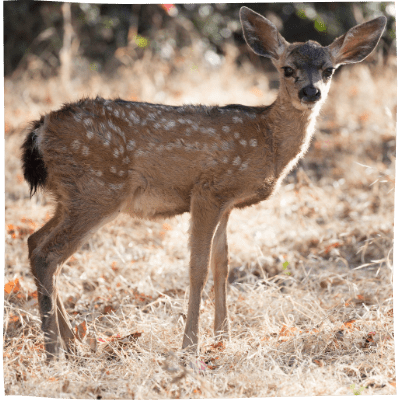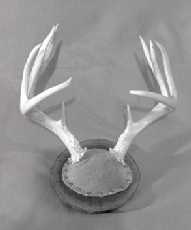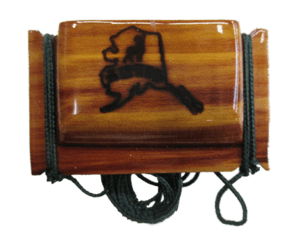All About Sitka Black-Tailed Deer

The Blacktail Deer Family
There are two main species in the Blacktail Deer family, although both are technically a subspecies of the mule deer, these are the Sitka and the Columbian Blacktail deer.
Columbian Black-Tailed Deer
 The Columbian Black-Tailed Deer, or Odocoileus hemionus columbianus, is found in the Pacific Northwest of the United States and throughout coastal British Columbia. They live comfortably in the Klamath National Forest on the border of California and Oregon. They are found mostly along the coastal areas of the western United States.
The Columbian Black-Tailed Deer, or Odocoileus hemionus columbianus, is found in the Pacific Northwest of the United States and throughout coastal British Columbia. They live comfortably in the Klamath National Forest on the border of California and Oregon. They are found mostly along the coastal areas of the western United States.
The geography of their habitat is the foothills of the Pacific west coast which has plentiful grasses and underbrush. These deer prefer security of the underbrush to being out in the open, as this allows them to feed while being protected from predators.
The Sitka Black-Tailed Deer
 The Sitka Black-Tailed Deer is commonly found throughout Canada’s British Columbia and the Southeastern region of Alaska.
The Sitka Black-Tailed Deer is commonly found throughout Canada’s British Columbia and the Southeastern region of Alaska.
This North American species is named after the city and borough of Sitka, Alaska but their actual scientific name is Odocoileus hemionus sitkensis.
This should not be confused with the Sika deer which is a completely different species, altogether (Cervus nippon).
Blacktail Deer vs Black-Tailed Deer vs Black Tailed Deer
Let’s just clear something up-
While we’ve always just called them “blacktail deer”, and some folks seem to refer them as “black tailed deer”, it would seem that the official name is technically “black-tailed deer”, according to the good folks at ADF&G.

And I suppose they might know. 😉
It would appear Wikipedia concurs with the use of “black-tailed deer” as the official designation for the subspecies.
But there is good news for those of us who say “blacktail deer”, as the Wikipedia entry makes plenty of allowance for that usage to be acceptable.
Whatever you call them, these deer with the black tails are amazing creatures, fun to hunt, and their meat is delicious.
If you want to call in more deer this hunting season, grab one (or two!) of these beautiful hand-crafted blacktail deer calls.
Made by an Alaskan blacktail hunter for blacktail hunters.
Physical Characteristics of the Sitka Deer
 The Sitka Black-Tailed Deer are a small breed.
The Sitka Black-Tailed Deer are a small breed.
When the fawns are born, they typically weigh less than 10 pounds and are much closer in weight with human babies than many baby mammals.
However, the females eventually grow to around 80 pounds with the males weighing close to 120 pounds, with some being known to reach as much as 200 pounds.
The Sitka Blacktail Deer’s fur changes color with the seasons, from reddish-brown in the summer to grayish-brown in winter.
The World Record Sitka Black-Tailed Deer
Boone & Crockett World Record
Peter Bond is the current world record holder for the largest Sitka Blacktail Deer (B&C World’s Record – Typical Sitka Blacktail), taken on Graham Island in 1970.
The main beams were 20 4/8″ & 19 4/8″ and the inside spread was listed as 19 6/8” with 5 points on each side.
The overall Boone & Crockett score on the rack is 133.
 What may be perhaps most amazing about this trophy deer is the fact that it sat mounted on Peter’s shop wall for over 20 years, with the owner never suspecting it was a world record.
What may be perhaps most amazing about this trophy deer is the fact that it sat mounted on Peter’s shop wall for over 20 years, with the owner never suspecting it was a world record.
Peter was a meat hunter and never had a buck mounted other than this one.
After overhearing an interesting conversation in which someone tried to buy the deer mount from the wall and Peter refused, his son decided it was time to get the full story.
Bond was finally recognized with a Certificate of Merit at the Boone and Crockett Club’s 23rd Big Game Awards, and published in the 1998 record book by that name.

(Photo credit Pope & Young Club, Records Sitka Blacktail Deer)
Pope & Young Record for Bow-Harvested Sitka Blacktail
The Pope & Young record for Sitka Blacktail Deer harvested with a bow belongs to Charles R. Hakari.
He took the deer in August 1987 on Prince of Wales Island, Alaska.
The score of this trophy rack measures at 116 3/8.
Eating Habits of the Sitka Black Tailed Deer
Sitka deer are herbivores that thrive on a diet that consists of the foliage of different shrubs and plants, particularly salmon berry bush and trailing raspberry. This is why their main habitat is in the forests or rainforest areas, as they need to eat green leaves for the nitrogen that allows their bodies to turn their food into vitamin B. While most people think of deer as grass-eaters, it is uncommon to find these deer eating grass when there is access to a wider range of plants inside their habitat.
Sitka Black-Tailed Deer find it difficult to digest certain types of foods which is why they must be careful about their diet. They are fond of berries and will occasionally eat twigs or corn if they are available.
What Are They Usually Eating During Winter Months?
While the green leaves are scarce during the winter, Sitka often turn to woody vegetation and lichens. Because the slow growing lichens are regularly found on rocks and various trees throughout their habitat, it is easiest for the deer to access this type of food during winter snows. If they must, they will also eat evergreens.
The Sitka Black-Tail Deer Habitat
Sitka deer are most common along coastlines or forests. They will venture into clearings but as this may make them susceptible to attacks, they prefer being under canopies of trees at the foothills of wooded mountains where they also can get at the foliage they need for survival.
A native to the coastal forests of Southeast Alaska and the north of British Columbia, the Sitka’s range has spread over the years as a result of transplants and the existing populations proliferating, however individual deer often live their entire lives within 1 to 2-mile radius.
Sitka are believed to have migrated thousands of years ago during the last ice age when most of Alaska was covered in ice. The deer existed along with bears, marmots, and caribou and are believed to have returned north as the ice began to recede.
Research conducted on Alaska’s Prince of Wales Island shows that there are usually about 20 or so deer to one square mile. This translates as there being a need for about 25 football fields of foliage to sustain one deer. Their Alaskan home provides a good habitat with lots of greenery to eat both in the winter and the summer months.
During the winter months, the Sitka’s main concern is for food sources which they manage well by seeking out old or mixed-age forest growth. This type of forest growth is found at an elevation level of about just under 1,500 feet.
The entire Sitka deer population fluctuates annually especially during the harsh winters in Alaska. However, despite these extreme conditions, they still manage to survive and thrive. In recent times they have also recovered from low populations, especially on Admiralty, Baranof, Chichagof, and the Kodiak Islands.
Canadian Locations
The Sitka are found mostly on Vancouver Island in British Columbia. The Island is one of the most populous places for these deer to call home in North America. The Province itself is called home of the Deer and hunters flock to Canada to hunt them. They are found as far north as the Liard River Valley and are also located in the coastal areas.
Alaskan Locations
It is common to find Sitka Black-Tail Deer in the Southeastern parts of Alaska. The area consists of several different boroughs where these animals may roam around, including Sitka, Petersburg, Haines, Juneau, and Wrangell. It is possible to find the animals on Kodiak Island, which is found in the South-central region of Alaska.
The original deer population was located throughout the Alexander Archipelago. They also have been found on the mainland north of Yakutat. Here, they also prefer staying near the coast. The Sitka was also formally introduced to Haida Gwaii during the 1890s.
Following their introduction, the Sitka were further transplanted to the Prince William Sound between 1917 and 1923. It was not until the 1920s however that they were brought to Kodiak Island and the 1950s when they were brought to Skagway and Haines.
The Sitka are still found near Yakutat and throughout Kodiak and the Afognak Islands. The Black-Tail Deer population fluctuates a lot in Alaska because of the harsh winters. They are a hardy species and they also benefit from living on islands like Admiralty and Baranof in Alaska where there are no wolves or similar predators.
Presently the Sitka are not designated at-risk. When first introduced in the 19th century to Haida Gwaii, the Sitka’s numbers grew so quickly that they were encouraged to be hunted to reduce the rapidly expanding population.
Do Black-Tailed Deer Migrate?
Depending on the range in which they live, Sitka deer are either migratory or residential. In fact, they have migrated to many different areas over the past several decades, including Prince William Sound and the Kodiak Islands. The migratory behavior of these animals is often unpredictable as some deer are more interested in migrating than others. This behavior tends to depend on the type of habitat they are living in as well.
As the Sitka prefer living in a covered forest, if the habitat is not in the condition that they would like to live in, they may choose to migrate over to other areas that have ready access to plenty of food and shelter. Some will look for higher elevation points at certain times of the year while others will stay put and will not leave their current location.
These deer are always migratory even if they are considered residential. Their home ranges vary from about 30 to 1200 acres in Alaska. They may also go to the higher elevations if the snow is especially heavy. When the snow begins to melt they will migrate up and use the areas that have southern exposures. This is because these areas have the freshest, green vegetation for them to eat.
In the spring, the Sitka have available lots of good quality foliage, so they can move to their summer areas. Spring is the time when they do their main migration. This migration is often less than 6 miles in total between their winter homes and their summer homes. This is again due to the fact that the deer generally live their entire 10 to 15-year lives within a 1 to 2-mile radius.
This is the practice for those that are considered migratory. Residential deer will only traverse about half a mile when they migrate. While they can survive cold and snow, if there is anything greater than 20 inches of snow on the ground, they will move to higher elevations.
The Sitka deer will not move across watersheds, even when they are covered with ice. When the snow is especially deep, they tend to stick to areas where there are greater thickets of trees. They have even been known to seek out the nearest coast to live at the beach until the spring months arrive.
Where Sitka Black Tailed Deer Hide
If they sense hunters or predators, these fast runners try to escape by running downhill or to the side of a hill.
These deer often hide out behind bushes, tall trees, and other areas where a lot of the plants are overgrown. By hiding in these areas, they are able to conceal their smaller bodies and blend in with their surroundings to avoid being captured by a predator.
Predators of Black-Tailed Deer
While there are predators in California and Oregon, the Sitka are not a species that is considered at risk.
Because the predators are much larger, they have an advantage over the deer and may have an easier time taking them down than their larger mule deer cousins. A fawn in distress call for predators is like a dinner bell ringing, inviting all hungry critters in the area in for an easy meal.
Predators of adult deer include wolves, black bears, cougars and brown bears, which are often much larger than the Black-Tail Deer.
There are very few predators in the Alaskan Islands, but bear will prey on deer when possible.
During the 19th century, Sitka Black-Tail Deer were so prevalent and capable of survival on the Haida Gwaii Islands and islands in Alaska, that hunting them soon became a necessity for population control.
Hunters were welcomed in order to reduce the population and keep it from overflowing.
The expanding deer population were eating up all the greenery and flora the islands had to spare.
Blacktail Deer Life Cycle
What Is the Average Life Span of Sitka Black-Tailed Deer?
Most of these animals can live for at least 10 years if they are not taken by hunters, predators, or harsh winters.
However, there are some Sitka Black-Tailed Deer that have made it to at least 15 years of age.
Rutting
The rutting period, involving does and bucks mating with one another, occurs like clockwork each year.
The male deer may begin to act more aggressively around one another, fighting with each other and chasing after the does more than they normally would.

The deer start to rut near the end of October or the beginning of November. Although the short rutting phase may end in mid-November, there are times when it continues after Thanksgiving.
During the rutting phase, it is not uncommon to see a bunch of bucks running all around.
However, this activity eventually dies down as the phase soon comes to an end.
When the bucks’ testosterone levels eventually start to decline, their behavior changes as they may begin losing weight and prefer to hide out instead of exerting boisterous displays of energy.
Why Do Deer Lose Their Velvet?
While testosterone levels are high during the rut phase, those levels immediately start to drop as soon as the phase is over.
As a result, male deer may begin losing their velvet due to such a sudden decline in testosterone.
The tissue becomes weaker and it eventually starts to fall off.
Do the Sitka Black-Tailed Deer Shed Their Antlers?
Sitka Black-Tailed Deer can and will shed their antlers during the winter season, usually beginning around December 10th.
Is It Possible to Find Their Antler Sheds?
It is possible to find antler sheds of the Sitka Black Tailed Deer. In fact, you may even find these sheds on the ground in a pile of leaves. The best time to look for these antler sheds is when the weather is still relatively chilly outside. Because the antlers are often shed during the winter months, you may have the best luck finding them during the months of March and April.
When Do Sitka Does Give Birth to Their Fawn?
When the Sitka does give birth, it is usually during the months of either May or June.
While some animals are known for having short gestation periods, the Sitka Blacktail Deer carry their young for up to seven months before giving birth to their fawn.
Two fawns may be born from one female Sitka deer at a time.
The female deer are extremely protective over their fawns.
They will go to great lengths to keep them safe from predators, which may include trying to hide their bodies while the doe goes out and about on the hunt for food.
The doe needs to make sure she is getting enough food in her system to produce the milk that the fawns will need to have to survive.
These deer are also very protective over any strange fawns they believe may be in danger.
Hunters and woodsman have observed that a call sounding like a fawn in distress will often bring two or more of these deer charging onto the scene aggressively, looking for a predator to kick and a fawn to rescue.
What Sounds Do They Make?
These animals make different sounds for specific times and situations, which allow them to communicate back and forth.
Some of the different things they do to make specific noises include grunting, stomping down on the ground, and even whining.
They may make the different noises at times to signify that they are in danger, in pain, or even feeling angry.
However, some sounds are made just to let other deer know that they are in the area.
More Information About the Black-Tailed Deer
Nocturnal Nature – They are notoriously nocturnal during hunting season.
They are, however, at their most active during dusk and dawn.
The Sitka deer are a lot like other mule deer when it comes to their nocturnal activity.
It is easier to find these deer quite early in the morning or even later in the evening instead of in the afternoon.
They will normally come out early in the morning to head out on the search for food.
Where They Bed Down – They find funnels made naturally by trees.
They bed down in these areas to conceal themselves and to feel greater security being located within this natural labyrinth of trees.
It offers deer a sense of security and concealment as they move undetected during their daily routines.
These animals will normally bed down in grassy, covered areas where there is a canopy to protect them from the elements, such as the sun and snow.
The natural canopy provides them with extra protection from the elements while making them feel far more secure as they hide out from different predators that may be on the prowl.
Where They Go When It Rains – They look for clearings where they can shake off the rain. The sound of rain hitting the tree leaves is uncomfortable for them.
Unlike most humans, the Sitka Black-Tailed Deer do not mind moving around in the rain.
In fact, it makes it much easier for them to get around without setting a predator off.
The leaves that would normally be crunchy and make a lot of sounds when stepped in quickly become soaked due to the rainfall, so that means these animals can easily walk over a bunch of the leaves without making sounds that would alert a predator.
They tend to have no problem walking around in the rain or looking for food while getting wet.
Distinct Sitka Deer Habits – They will stick to a trail and will loop around that trail as needed throughout their day or whenever they sense danger.
Common Habits and Behaviors – These deer tend to stick together.
They also like hanging out in grassy areas and are often spotted in the grass after the sun starts setting or right before it starts rising for the day.
It is not such a common sight to see the Sitka Black-Tail Deer walking around during the afternoon.
Summary on Sitka Black-Tailed Deer
The Sitka Blacktail Deer, commonly found in Alaska, are small deer that feast on vegetation, take good care of their fawn, and occasionally migrate short distances from one place to the next based on the conditions of their habitat and the specific seasons.
If you are ever in one of the areas where these deer are found, there is an excellent chance they will be nearby, and if you are very quiet you may even end up spotting one!
For a better chance at seeing one of these elusive deer, grab your own hand-made AKTIS Blacktail Deer Call.

love your calls , I got my second one today and thanks so much!